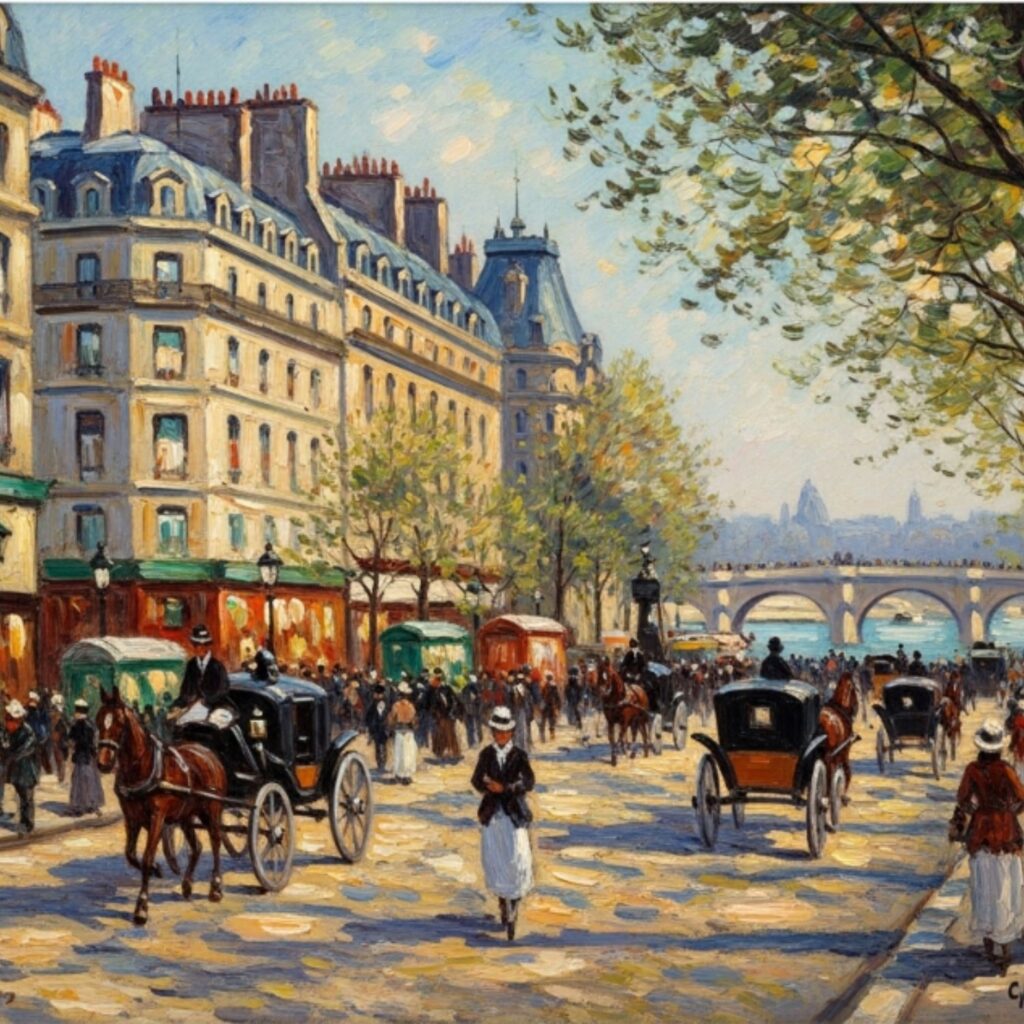
In the mid-19th century, academic painting, with its strict rules on subject matter, composition, and technique, was dominant. Paintings typically depicted historical, mythological, or religious stories with meticulous detail, sharp lines, and conventional colors. However, a group of young artists felt constrained by these norms. They wanted to represent the world more authentically, not through the lens of the past, but through their own perceptions of the present.
The key to Impressionist painting was capturing the immediate “impression” of the visual world. Artists left their studios and took their easels outdoors (en plein air) to directly observe and record the changing light. They realized that the color of an object was not fixed but constantly changed depending on the time of day, the weather, and the surrounding environment.
To recreate the vibrancy of light, they used quick, powerful, and decisive brushstrokes. Instead of blending colors on a palette, they placed patches of pure color side by side on the canvas. When a viewer stood at a certain distance, these patches of color would optically blend in the eye, creating a lively and vibrant effect that felt more true-to-life than a flat, uniform color.
The Impressionist movement produced great names such as Claude Monet, who dedicated his life to the beauty of light; Edgar Degas, a master of ballet scenes and urban life; and Pierre-Auguste Renoir, famous for his colorful and joyful portraits. Their works are not just beautiful paintings but are testaments to a revolution in how we perceive the world and art.
The rise of Impressionism paved the way for a series of later modern art movements, from Post-Impressionism to Cubism and Abstraction. Today, their works are not only displayed in the world’s most prestigious museums but continue to inspire generations of artists and art lovers alike.